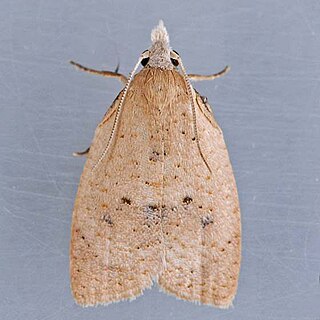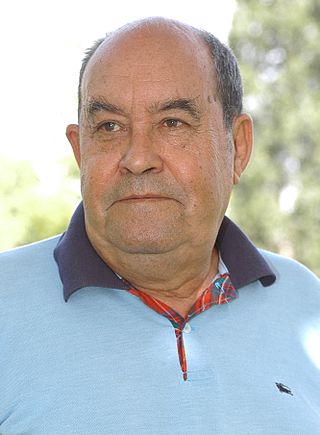
An occupational hazard is a hazard experienced in the workplace. This encompasses many types of hazards, including chemical hazards, biological hazards (biohazards), psychosocial hazards, and physical hazards. In the United States, the National Institute for Occupational Safety and Health (NIOSH) conduct workplace investigations and research addressing workplace health and safety hazards resulting in guidelines. The Occupational Safety and Health Administration (OSHA) establishes enforceable standards to prevent workplace injuries and illnesses. In the EU, a similar role is taken by EU-OSHA.

Montenegrin wine is wine made in the Balkan country of Montenegro. Many Montenegrin vineyards are located in the southern and coastal regions of the country. Montenegrin wines are made from a wide range of grape varieties including Krstač, Cabernet Sauvignon, Chardonnay and Vranac. Other indigenous cultivars include Bioka, Čubrica, Krstač, and Žižak.

Sparganothoides is a genus of moths belonging to the subfamily Tortricinae of the family Tortricidae.

Álvaro Borja Morata Martín is a Spanish professional footballer who plays as a striker for Serie A club AC Milan and captains the Spain national team.

Antonio García-Bellido y García de Diego ForMemRS is a Spanish developmental biologist. His ideas and new approaches to the problem of development have been followed and pursued by many researchers worldwide. He is Research Professor at the Spanish National Research Council since 1974.

The 2015 UEFA Champions League final was the final match of the 2014–15 UEFA Champions League, the 60th season of Europe's premier club football tournament organised by UEFA, and the 23rd season since it was renamed from the European Champion Clubs' Cup to the UEFA Champions League. It was played at the Olympiastadion in Berlin, Germany, on 6 June 2015, between Italian side Juventus and Spanish side Barcelona.

The Safe-in-Sound Excellence in Hearing Loss Prevention Award is an occupational health and safety award that was established in 2007 through a partnership between the National Institute for Occupational Safety and Health (NIOSH) and the National Hearing Conservation Association (NHCA). In 2018, the partnership was extended to include the Council for Accreditation in Occupational Hearing Conservation (CAOHC).
Sparganothoides morata is a species of moth of the family Tortricidae. It is found in Panama, Venezuela and Trinidad.
Neocalyptis morata is a species of moth of the family Tortricidae. It is found in Zhejiang, China.

Anacaenini is a tribe in the subfamily Hydrophilinae of aquatic beetles, and it contains 256 species in 6 genera.

Chaetarthriinae is a subfamily in the family Hydrophilidae of aquatic beetles, and it contains 92 species in 8 genera.

The 2016–17 season was Real Madrid Club de Fútbol's 113th season in existence and the club's 86th consecutive season in the top flight of Spanish football. It covered a period from 1 July 2016 to 30 June 2017.

Stephen Schneider is an American actor, writer and entrepreneur, best known for his roles as Jeremy Santos on Broad City, Ty Wyland on You're the Worst, and Ben Cooper on the failed ABC sitcom Imaginary Mary (2017).

Ginés Morata Pérez is a Spanish biologist who is Research Professor at the Autonomous University of Madrid in Spain and an expert in developmental biology of the fruit fly (Drosophila), a specialty he has worked on for over 40 years.

The 2018–19 season was Chelsea's 105th competitive season, 30th consecutive season in the top flight of English football, 27th consecutive season in the Premier League, and 113th year in existence as a football club. The season covers the period from 1 July 2018 to 30 June 2019.
Crenitis is a genus of water scavenger beetles in the family Hydrophilidae. There are about 19 described species in Crenitis.
Crenitis maculifrons is a species of water scavenger beetle in the family Hydrophilidae. It is found in North America.
Group F of UEFA Euro 2020 qualifying was one of the ten groups to decide which teams would qualify for the UEFA Euro 2020 finals tournament. Group F consisted of six teams: Faroe Islands, Malta, Norway, Romania, Spain and Sweden, where they played against each other home-and-away in a round-robin format.

LHA 120-N 55 or N55 is an emission nebula located within the Large Magellanic Cloud (LMC). N55 is situated inside a superbubble called LMC 4. It is a glowing clump of gas and dust that gets its light output from the hydrogen atoms shedding electrons within it. It was named in 1956, in a catalogue of H-alpha emission line objects in the LMC.
Sathon is a genus of braconid wasps in the family Braconidae. There are more than 20 described species in Sathon, found throughout the world.













